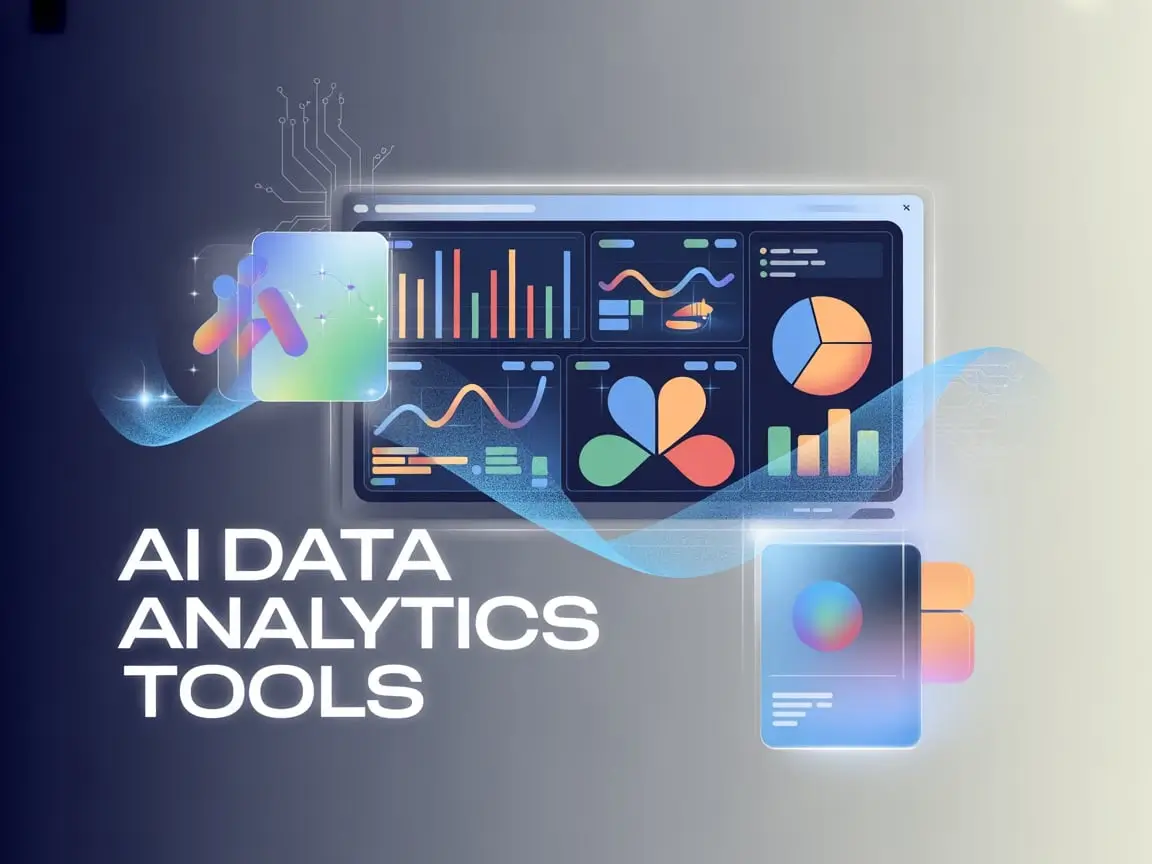Artificial intelligence has changed the way we understand and use data. Instead of spending hours cleaning spreadsheets and building charts, AI data analytics tools can now analyze information, find patterns, and deliver clear insights within minutes.
Whether you work in marketing, finance, agriculture, or tech, these tools help you make better decisions faster. In this guide, we’ll explore five of the best AI data analytics tools. Each has been tested and reviewed based on real-world use, reputation, and user feedback.
What are the 5 Top AI Data Analytics Tools?
Here are the top 5 AI data analyst tools:
- Julius AI
- Hex
- EOS Data Analytics
- Hype Auditor
- Macro Micro
1. Julius AI
Best for: Interactive data analysis
Julius AI turns spreadsheets into conversations. You can upload your data and simply ask questions in plain English, like “What were our top-selling products last month?” The tool instantly generates visual charts and summaries.
Key features:
- Natural language data analysis
- Auto-generated visuals and dashboards
- Works with Excel, Google Sheets, and databases
2. Hex
Best for: Data teams and organizations
Hex is designed for companies that want a modern, collaborative space to explore data. It connects notebooks, SQL queries, and visual dashboards all in one place.
Key features:
- Live notebooks with Python and SQL
- Real-time team collaboration
- Interactive reports for stakeholders
3. EOS Data Analytics
Best for: Agriculture, forestry, and environmental analysis
EOS uses satellite imagery and machine learning to analyze land use, crop health, and environmental changes. It helps farmers, governments, and environmental groups monitor conditions and plan ahead.
Key features:
- Satellite-based monitoring
- AI crop and land analysis
- Global data access with high accuracy
4. Hype Auditor
Best for: Marketers and brands
Hype Auditor uses AI to measure audience quality, detect fake followers, and track influencer performance. It’s a must-have for anyone running campaigns on Instagram, YouTube, or TikTok.
Key features:
- AI-based audience authenticity check
- Campaign performance tracking
- Influencer discovery by niche and engagement rate.
5. Macro Micro
Best for: Financial analysts and investors
Macro Micro combines AI and global macroeconomic data to help users track trends and predict shifts in markets. It provides dashboards for inflation, interest rates, and stock performance.
Key features:
- Global economic indicators
- AI-powered data visualization
- Market forecasting insights
A Quick Comparison Table: Top AI Data Analytical Tools
| Tool | Best For | Key Features | Pricing |
|---|---|---|---|
| Julius AI | Conversational analytics | Natural language queries, charts | Free + Paid plans |
| Hex | Team collaboration | SQL, Python, dashboards | Free tier + Business plans |
| EOS | Agriculture analytics | Satellite imaging, AI monitoring | Custom pricing |
| Hype Auditor | Influencer marketing | Audience analysis, fake check | Paid plans |
| Macro Micro | Economic data | Global indicators, visualization | Free + Premium |
Why Use AI Tools For Data Analysis?
AI analytics tools reduce human error and speed up the decision-making process. Instead of crunching numbers manually, they analyze trends, predict outcomes, and visualize insights. Businesses that use these tools often report better forecasting, improved efficiency, and clearer communication between teams.
FAQs
1. What is the AI tool for data analysis?
An AI tool for data analysis is software that uses artificial intelligence and machine learning to process, interpret, and visualize data. Tools like Julius AI, Hex, or Hype Auditor can automatically detect patterns, build charts, and offer insights without manual coding. They help businesses save time and make smarter, data-backed decisions.
2. How is AI used in data analytics?
AI is used in data analytics to handle large and complex datasets efficiently. It can clean messy data, detect trends, forecast future outcomes, and even suggest actions based on insights. For example, marketers use AI to track campaign performance, while farmers use it to predict crop yields. The technology reduces human error and speeds up analysis.
3. Can ChatGPT do data analysis?
Chat GPT can help explain data concepts, generate Python or SQL queries, and interpret summarized results, but it doesn’t directly analyze raw datasets on its own. However, when connected with external tools or structured data inputs (like spreadsheets through plugins), it can assist in interpreting patterns and writing reports more effectively.
4. Is GPT-4 a good data analyst?
GPT-4 can be a useful assistant for data analysts, but it isn’t a replacement for specialized AI analytics platforms. It can help you understand insights, draft visual explanations, or interpret statistics in plain language. But tools like Julius AI or Hex are better suited for hands-on data analysis since they directly connect to databases and automate analytics workflows.



